In the 2024-2025 school year, Minh Hoa district has 28 combined classes with more than 350 primary school students. These classes are concentrated in schools located in Dan Hoa commune (9 classes), Trong Hoa (13 classes) and Thuong Hoa (6 classes). Each combined class is taught by 1 teacher, with 5-14 students of 2-3 levels (classes). Most of the combined classes are located in remote schools, sparsely populated areas and areas inhabited by ethnic minorities.
Trong Hoa Primary and Secondary Boarding School for Ethnic Minorities No. 2 is the unit with the most combined classes in the district. In the 2024-2025 school year, the school has 8 combined classes in the villages: Pa Choong, Ka Ooc, Si, Cha Cap. The people and students in these villages are mainly Bru-Van Kieu, Chut ethnic groups, living dozens of kilometers away from the commune center and the main school. Due to the small number of students, long distances and difficult travel, many families do not have the means to take their children to school, the school is forced to organize combined classes right in the village to maintain teaching and learning.
Vice Principal of Trong Hoa Primary and Secondary School No. 2 for Ethnic Minorities, Tran Trong Lam, said: “To organize teaching and learning in combined classes, the school prioritizes teachers with good expertise, passion for the profession and many years of experience to assign as homeroom teachers. In addition, the school also sends teachers of subjects such as music , fine arts, physical education, information technology, etc. to teach the students. However, many schools do not have electricity, causing great difficulties in teaching, especially music and information technology. In that context, the school still encourages and rotates teachers to teach combined classes to bring letters to students.”
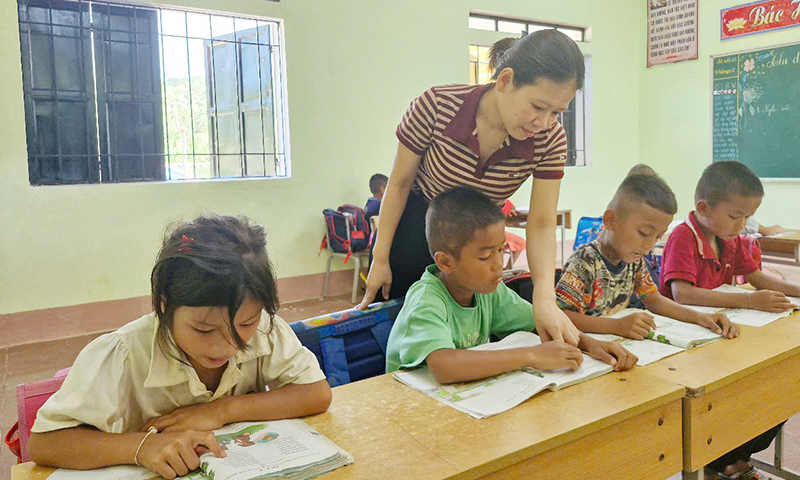 |
Cha Cap school is about 15km from the center of Trong Hoa Primary and Secondary School No. 2. The population here is sparse and the number of students is small, so the school has to organize 2 combined classes, including: Class 1+2E and Class 4+5E. Specifically, class 1+2E has 8 first graders and 3 second graders; class 4+5E has 10 fourth graders and 4 fifth graders.
Teacher Cao Thi Hoang, who has worked in Trong Hoa commune for 14 years and taught a mixed class for many years, confided: “Teaching a mixed class is very difficult. Most first graders do not speak Mandarin fluently, so their ability to absorb knowledge is limited. Not to mention the small classroom area, with two boards facing each other, students sit with their backs to each other, so it is inevitable that older students will turn to remind or talk to, or tease younger students.”
Next to Ms. Hoang’s class is another combined class led by teacher Dinh Van Chung. Even though it is the last days of the school year, he is still enthusiastically teaching his students. After imparting knowledge to grade 5, he lets them review their lessons and then turns to teach grade 4. “Because I teach a combined class, I have to prepare two different sets of lesson plans. Teaching and learning in a combined class causes both teachers and students many difficulties, hardships, and disadvantages, but I tell myself that I have to try harder to bring letters to the students,” Mr. Chung confided.
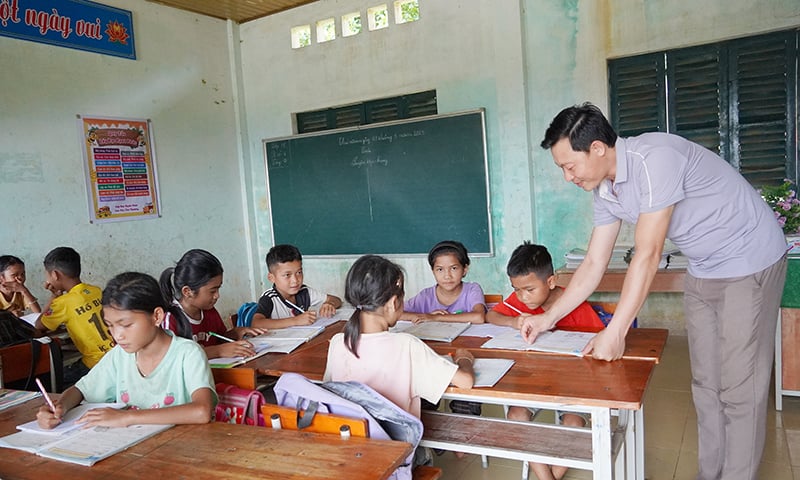 |
Dan Hoa Primary and Secondary School No. 2 has 6 combined classes in the villages of Ka Dinh, Ba Loc, and Ta Leng with 73 students. Teaching and learning in combined classes is difficult not only in "sowing knowledge and cultivating people" but also in the role of teachers. Teacher Dinh Thi Huong Giang, who teaches combined class 1+2A5 at Ta Leng school, shared: "In addition to teaching, sometimes we also have to take care of students' food, clothing, and maintain class size. Sometimes teachers also mobilize and collect old clothes, buy books, and candy to give to the students. Luckily, the students here are well-behaved and obedient to their teachers."
According to teachers working at schools in the border area of Minh Hoa district, teaching a combined class is always much harder than teaching a single class. Because in addition to the homeroom teacher, subject teachers also have to prepare two sets of lesson plans. Some years, some combined classes even have to teach up to three levels, increasing the workload of teachers many times over.
| Combined class teaching is a form of teaching organization in which a teacher, at the same time and space, is responsible for teaching students in 2 or more different groups (classes) of different levels in order to achieve the seteducational goals. According to regulations, particularly difficult areas can organize combined classes to create favorable conditions for students to go to school. Each combined class must not exceed 15 students and must not exceed 2 levels. In special cases, 3 levels can be combined but each class must not exceed 10 students. |
Principal of Dan Hoa Primary and Secondary School No. 2 Nguyen Van Chuong said: “To organize teaching and learning in combined classes, the school directs teachers to base on the curriculum of each subject to create a teaching plan suitable for the students’ level. In addition to organizing teaching and learning, teachers must pay attention to and encourage students and parents in both studying and living. Although there are many difficulties, the quality of education in these combined classes is still quite high, ensuring conditions for students to move up to the next grade”...
“We understand that there are still many shortcomings in organizing combined classes, but local authorities and the education sector have not been able to eliminate them. Because many villages are too far from the school center, while transportation is difficult. With the motto of creating the most favorable conditions for students, ensuring the maintenance and consolidation of the results of universal primary education, in the coming time, the district and local education sectors will study and gather students from grade 3 and above to study at the main school or a school with sufficient conditions to eliminate combined classes, creating conditions for students to study better. I also hope that competent authorities will pay attention and have appropriate policies for teachers who are teaching combined classes,” said Nguyen Huu Tho, Head of the Department of Education and Training of Minh Hoa district.
Spring King
Source: https://baoquangbinh.vn/xa-hoi/202506/nhung-lop-hoc-ghep-noi-dai-ngan-truong-son-2227040/



























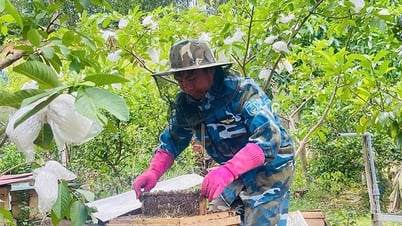








































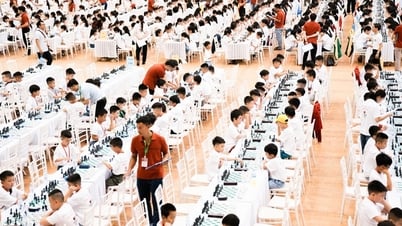



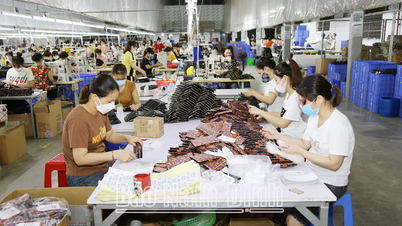

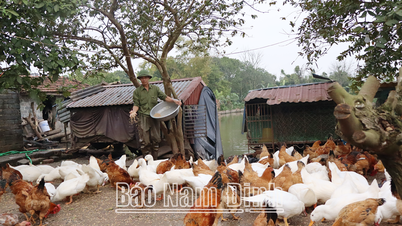



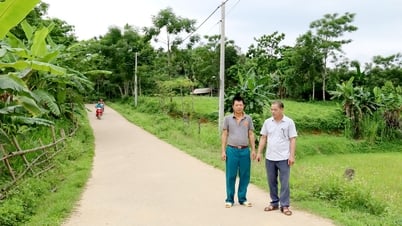
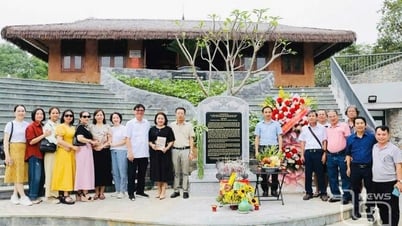
















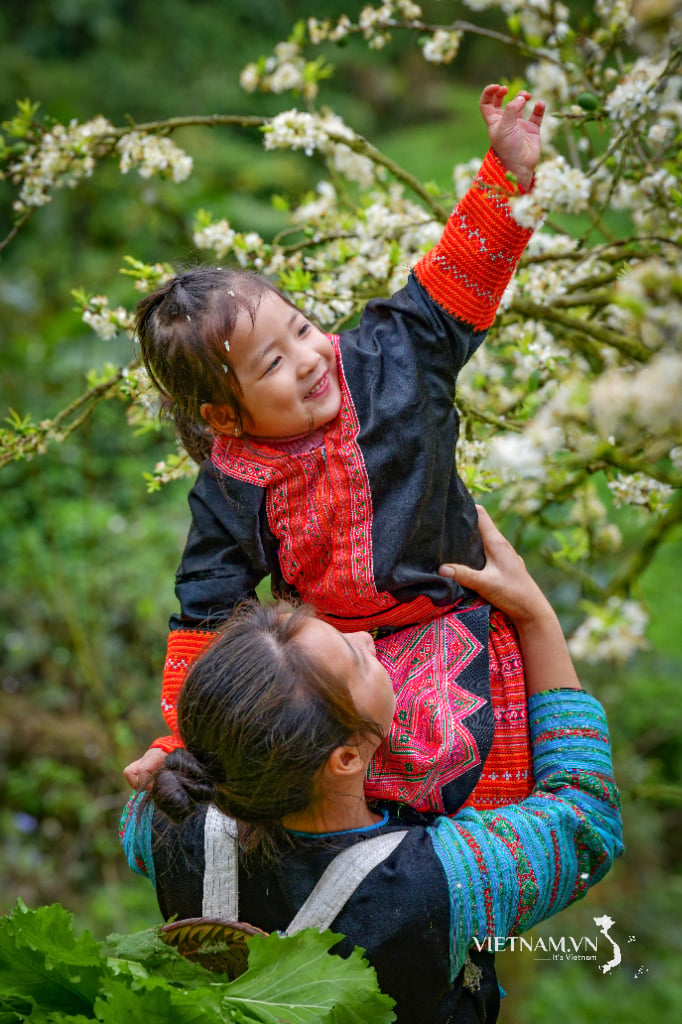

Comment (0)